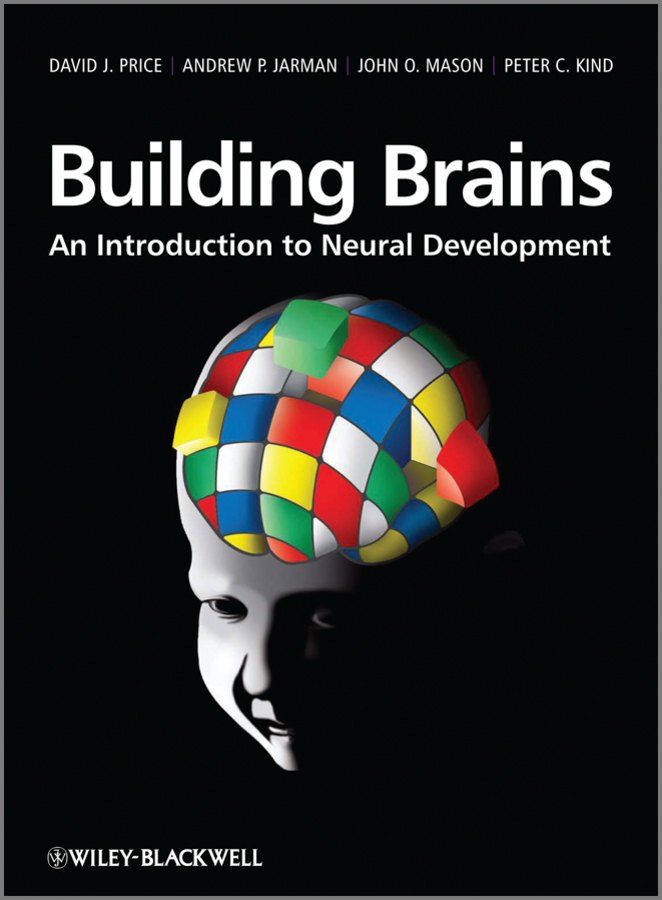Электронная книга: David Price J. «Building Brains. An Introduction to Neural Development»

|
The development of a brain from its simple beginnings in the embryo to the extraordinarily complex fully-functional adult structure is a truly remarkable process. Understanding how it occurs remains a formidable challenge despite enormous advances over the last century and current intense world-wide scientific research. A greater knowledge of how nervous systems construct themselves will bring huge benefits for human health and future technologies. Unravelling the mechanisms that lead to the development of healthy brains should help scientists tackle currently incurable diseases of the nervous system such as autism, epilepsy and schizophrenia (to name but a few), discover more about the processes that cause the uncontrolled growth associated with cancer and develop possible treatments. Building Brains provides a highly visual and readily accessible introduction to the main events that occur during neural development and the mechanisms by which they occur. Aimed at undergraduate students and postgraduates new to the field, who may not have a background in neuroscience and/or molecular genetics, it explains how cells in the early embryo first become neural, how their proliferation is controlled, what regulates the types of neural cells they become, how neurons connect to each other, how these connections are later refined under the influence of neural activity including that arising from experience, and why some neurons normally die. Key Features: A concise illustrated guide focusing on the core elements of current understanding of neural development, emphasising common principles underlying developmental mechanisms and supplemented by suggestions for further reading. Text boxes throughout provide further detail on selected major advances, issues of particular uncertainty or controversy and examples of human diseases that result from abnormal development. A balanced mammalian/non-mammalian perspective, drawing on examples from model organisms including the fruit fly, nematode worm, frog, zebrafish, chick, mouse, ferret, cat, monkey and human, and emphasising mechanisms that are conserved across species. Introduces the methods for studying neural development including genetics, transgenic technologies, advanced microscopy and computational modeling, allowing the reader to understand the main evidence underlying research advances. Student-friendly, full colour artwork reinforces important concepts; an extensive glossary and definitions in page margins help readers from different backgrounds; chapter summaries stress important points and aid revision. Associated Website includes a complete set of figures from the textbook. Издательство: "John Wiley&Sons Limited"
ISBN: 9780470979631 электронная книга Купить за 13586.89 руб и скачать на Litres |
Другие книги автора:
| Книга | Описание | Год | Цена | Тип книги |
|---|---|---|---|---|
| Building Brains. An Introduction to Neural Development | Provides a highly visual, readily accessible introduction to the main events that occur during neural development and their mechanisms Building Brains: An Introduction to Neural Development, 2nd… — John Wiley&Sons Limited, электронная книга Подробнее... | электронная книга |
См. также в других словарях:
Wikipedia:Featured article candidates — Here, we determine which articles are to be featured articles (FAs). FAs exemplify Wikipedia s very best work and satisfy the FA criteria. All editors are welcome to review nominations; please see the review FAQ. Before nominating an article,… … Wikipedia
Educational neuroscience — (also called Mind Brain and Education; MBE) is an emerging scientific field that brings together researchers in cognitive neuroscience, developmental cognitive neuroscience, educational psychology, educational technology, education theory and… … Wikipedia
Anthropology and Archaeology — ▪ 2009 Introduction Anthropology Among the key developments in 2008 in the field of physical anthropology was the discovery by a large interdisciplinary team of Spanish and American scientists in northern Spain of a partial mandible (lower… … Universalium
Human brain — The human brain controls the central nervous system (CNS), by way of the cranial nerves and spinal cord, the peripheral nervous system (PNS) and regulates virtually all human activity.Cite web|url=http://encarta.msn.com/encyclopedia… … Wikipedia
Choline — The N,N,N trimethylethanolammonium cation, with an undefined counteranion, X− Choline is a water soluble essential nutrient.[1][ … Wikipedia
nutrition, human — Introduction process by which substances in food are transformed into body tissues and provide energy for the full range of physical and mental activities that make up human life. The study of human nutrition is interdisciplinary in… … Universalium
